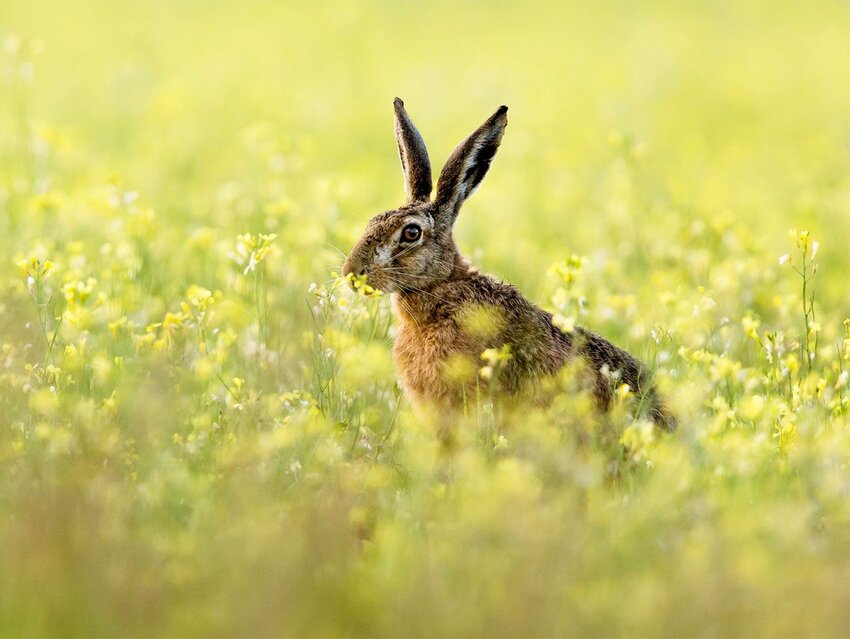The English language is a conglomeration of other languages, and everyday words and slang sometimes get misconstrued, which leaves them with new meanings. This type of mix-up has happened a lot in the world of animal nicknames. "Bunny," for example, was intended for an entirely different creature, and the word "pig" is widely misused. We don't know why animal nicknames in particular have had such a confusing journey, but here are some fascinating stories of their origins.
Pony
Powny, the Scottish word to describe a very small horse, has been in use since the mid-17th century. At the time, the specific definition of powny was "a horse less than 13 hands tall." It likely came from a (now-obsolete) French word, poulenet, that had roughly the same meaning: "little foal." "Foal" is the technical term for a horse younger than 1 year old, but in English (and especially among children) it's common to use the word "pony" instead. The modern definition of a pony is a horse of a small breed that is less than 58 inches (14 and a half hands) tall at the shoulder.
The usage of "pony" as an indicator of something smaller than usual also has spilled over into barware. As "pony" can mean "something that is smaller than standard," the pony glass comes in two styles: a quarter-pint of beer or a 1-ounce pour (sometimes called a cordial glass).
Bunny
"Bunny" is the word most commonly used to refer to a baby rabbit (or just any rabbit, period), but it's more of a pet name. To biologists or veterinarians, a baby rabbit is called a "kitten" or "kit," and a newborn hare (a mammal often mistaken for a large rabbit) is called a "leveret." Colloquially, though, we tend to call them all "bunnies." "Bunny" comes from the Scottish language; the use of bun in Scottish dialects traces back to the late 16th century, when it was used to describe a squirrel. In the late 17th century, it took on a new meaning, referring to rabbits and hares.
Puppy
For more than 500 years, "puppy" has been used to describe a small dog, although in the late 15th century, it was specifically "a woman's small dog." It likely came from the French word poupée, which means "doll" or "toy." The probable connection was that the small size of the dog resulted in it being petted and played with like a doll. In the 1590s, its direct meaning shifted from a "toy dog" to a "young dog," which is how we still use it today. Around that time, it replaced the nearly obsolete word for a puppy, "whelp," which is now mostly used as a verb for when a female dog gives birth.
Kitty
"Kitty," a term now used as slang for any cat, originated from the word "kitten," which has been around for nearly 700 years. It's an Anglo-French variant of kitoun, from the earlier Old French chaton or chitoun, meaning "little cat." The word "kitty" itself was first recorded in 1719 as another word for "young cat."
The use of "Kitty" as a common nickname for "Catherine" started around the 16th century; around that time, it was also used as a sort of synonym for "young girl." This means that using "kitty" to refer to a young girl was actually used before "kitty" referred to a cat. The usages of the word "kitty" are widespread: It can be a noun for "the pool of money in a card game" (from late 19th-century American English) and another word for "jail" (from early 19th-century England). Perhaps most obscurely, in the early 20th century, "to have kittens" meant "to lose one's composure."
Pig
It seems as though all the words for this animal have become muddled over the centuries. Today, "pig," "swine," "hog," and sometimes "boar" are used interchangeably, but there are differences among all of these terms. "Pig'' (from Middle English "pigge") is technically the word for a young swine that isn't an adult yet (similar to "puppy" or "kitten"). But we usually use "piglet" or "piggy" for that, leaving "pig" for a much broader definition and age range. The word "piggy" (also spelled "piggie") has been used since the 18th century to denote "a little pig." "Hog" (from Old English hogge) technically refers to a swine that weighs more than 120 pounds, but it's usually used for any adult swine. Further differentiating the porcine creatures, a boar (from Old English bar) is a domestic male pig, and a sow (from Old English sugu or su) is a domestic female pig. There is some modern understanding of a boar as a wild pig with tusks, but the word technically applies to all uncastrated domestic male pigs (and some other species, including badgers, guinea pigs, and hedgehogs).
Featured image credit: DamianKuzdak/ iStock

